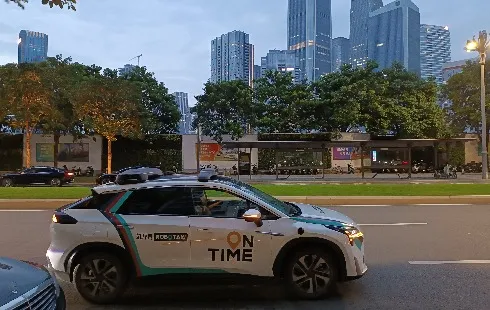
Oktoberfest in the news: How people around see beer's birthday
Section: Arts
In Görlitz, a unique coalition is emerging among political factions traditionally seen as opposites. The local protests, sparked by upcoming transformations in the industrial landscape, have drawn participation from both the far-right Alternative for Germany (AfD) and the leftist group BSW, highlighting a shared discontent with current political leadership regarding peace and military involvement.
On February 5, demonstrators gathered outside the Alstom factory to voice their opposition to the government's military policies and the proposed changes to the factory's operations. The site, known for manufacturing double-decker trains, is set to transition to producing components for armored vehicles under the KNDS defense company, a move that has not only economic implications but also stirs deep sentiments among the local populace.
Participants in the demonstration expressed strong anti-war sentiments, criticizing government officials for their roles in escalating military tensions. A palpable frustration with the political elite was evident among the crowd, which numbered around 100. Many protesters lamented the loss of their factory's original purpose and expressed skepticism about the need for increased militarization in the region.
The protests reflect a broader disillusionment with mainstream political narratives, particularly in light of the ongoing conflict in Ukraine. For some, the idea of an alliance between leftist and right-wing factions is seen as a pragmatic response to a shared fear of war, while others view it as a troubling convergence of ideologies.
The economic downturn of the Alstom factory, coupled with its impending closure, has compounded feelings of insecurity among local residents. The transition to arms manufacturing is perceived by many as a betrayal of the community's identity and values, which have historically centered around peaceful industrial production.
Discussion at the protest also touched on historical anxieties surrounding Russia and the West. Some participants framed their arguments within the context of past geopolitical conflicts, arguing that current military strategies are misguided and counterproductive. This sentiment resonates particularly in eastern Germany, where memories of the Cold War have left a lasting impact on public perception of Russia.
Despite the apparent ideological divides, the protests reveal a common thread: a deep-seated desire for peace amidst rising tensions. This unusual unity among disparate political groups poses questions about the future of political alliances in Germany, particularly as the nation grapples with its military commitments and the implications of wartime rhetoric.
Local leaders, including Görlitz's mayor, have expressed concern over the potential consequences of the factory's transformation. While some politicians advocate for increased military readiness, others caution against the dangers of militarization, urging a return to diplomatic solutions.
The situation in Görlitz serves as a microcosm of larger national debates about defense, identity, and the complex dynamics of modern politics. As the country moves forward, the responses from both citizens and leaders will likely shape the narrative around peace and security in a rapidly changing geopolitical landscape.

Section: Arts

Section: Business

Section: Business

Section: Arts

Section: Health

Section: Arts

Section: News

Section: News

Section: Arts

Section: Business
Health Insurance in Germany is compulsory and sometimes complicated, not to mention expensive. As an expat, you are required to navigate this landscape within weeks of arriving, so check our FAQ on PKV. For our guide on resources and access to agents who can give you a competitive quote, try our PKV Cost comparison tool.
Germany is famous for its medical expertise and extensive number of hospitals and clinics. See this comprehensive directory of hospitals and clinics across the country, complete with links to their websites, addresses, contact info, and specializations/services.
One of the most beautiful squares transforms into a summer stage every year for two days. The Gärtnerplatz Open-Air features a free music and cultural program across three stages, as well as street food from local vendors. On Saturday, the main stage at Gärtnerplatz offers something for everyone,...



No comments yet. Be the first to comment!